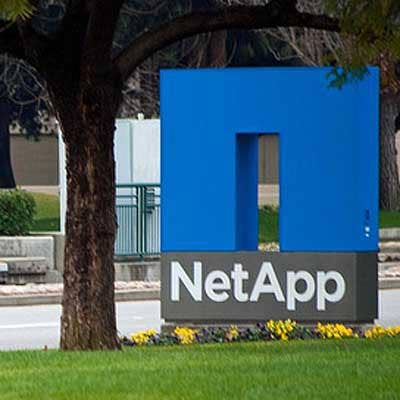NetApp's All-Flash Storage Array Sales Take Crown From Dell EMC

NetApp has overtaken Dell EMC to become the storage industry's top provider of all-flash storage for the first time, according to a new report.
NetApp in the second quarter took the crown from rival Dell EMC on the strength of its NetApp AFF A-series, including the AFF A800, which grew in sales by just shy of 150 percent over the second quarter of 2017, according to data from research firm IDC and Wells Fargo Securities.
NetApp in the second quarter of 2018 sold $556.1 million worth of all-flash storage arrays, up 67.6 percent over the $331.7 million the company sold in the same period of 2017.
[Related: 22 Flash Storage Products Heating Up The Data Center Market]
Of the seven top vendors, NetApp's overall growth rate was the highest, with the exception of China-based Huawei, which saw sales grow by over 400 percent from $20 million in 2017.
Dell EMC saw all-flash storage array sales in the second quarter grow 21.3 percent over last year's second quarter to $543.8 million, giving it a solid second place.
It is quite the change from three years ago, said John Woodall, vice president of engineering at Integrated Archive Systems, a Palo Alto, Calif.-based solution provider and longtime NetApp channel partner. Back then, Woodall said, NetApp flash storage was thought of either as FlashRay and the Mars operating system, a project that the vendor abandoned, or the then-recently introduced E-series.
"An industry swagger switch in storage is, 'How's my flash storage doing?'" he said. "A lot of people were asking, 'Where's NetApp?' People at NetApp were asking, 'Where's NetApp?'"
Now, however, NetApp can sit on top of the market and see the rest of the industry under it, Woodall said. "Until recently, NetApp wasn't even in the top five in flash storage," he said. "Now it's on top of the top five."
NetApp has put a lot of hard work and focus into its storage innovation, Woodall said.
"NetApp's success is not just in its flash storage growth," he said. "It's in all-around innovation. It's in participation in the NVMe Forum and other organizations to take a leadership position in the industry."
Octavian Tanase, senior vice president for the OnTap system and software group at NetApp, told CRN that getting to the top of the all-flash storage market has been a journey.
"We try to inspire customers with innovation. … We are on a pace to release new innovations every six months," Tanase said.
NetApp's success stems in large part from not only an investment in flash storage, but in the fact that it is the fastest-growing SAN vendor of the top-five vendors, Tanase said.
NetApp has also had a strong focus on storage, including flash storage, not only in the data center but at the edge and in the cloud, he said. "We feel that we are present wherever data is being created," he said.
NetApp's SolidFire flash storage business saw a 17 percent drop year over year, but Tanase said that it was related to the introduction of NetApp's new HCI hyper-converged infrastructure, which uses SolidFire technology as its core.
"So I think a lot of engineering and focus on SolidFire has [now] been on HCI," he said.
Bharat Badrinath, NetApp's vice president of products and solutions marketing, told CRN that NetApp will continue innovating on its flash storage technology.
"There is a pretty robust road map. … We're in this for the long term," Badrinath said.
NetApp at its NetApp Insight conference, coming up next month in Las Vegas, will have several announcements related to the cloud, HCI and flash storage, and is looking to extend its leadership in artificial intelligence, Badrinath said.
Tanase said that NetApp going forward will also have a two-pronged approach to server-class memory, an up-and-coming technology aimed at increasing storage performance.
First, Tanase said, NetApp will bundle server-class memory in its storage controllers to serve as a read cache, which can increase performance about 30 percent. It is currently in testing.
Second, NetApp will exploit the ubiquity of server-class memory in servers from partners like Lenovo and Fujitsu as well as in servers from big-name storage competitors as technologies like Intel Optane and other types of memory get more persuasive, he said.
NetApp is also getting ready to launch a new software, NetApp Memory Accelerated Data, or MAX Data, based on its PlexiStor acquisition. MAX Data will help customers accelerate application performance by stitching together a memory-based file system from multiple servers, he said. "This will further our flash storage leadership," he said.
Sam Grocott, senior vice president of marketing at Dell EMC, told CRN via email that his company sees only strength in its flash storage business going forward.
"Dell EMC's lead in the overall external storage market is two times that of NetApp. We're very confident in our All-Flash portfolio from top to bottom, especially now that we've launched PowerMax, Dell EMC's flagship all-flash array with end-to-end NVMe done right," Grocott wrote.